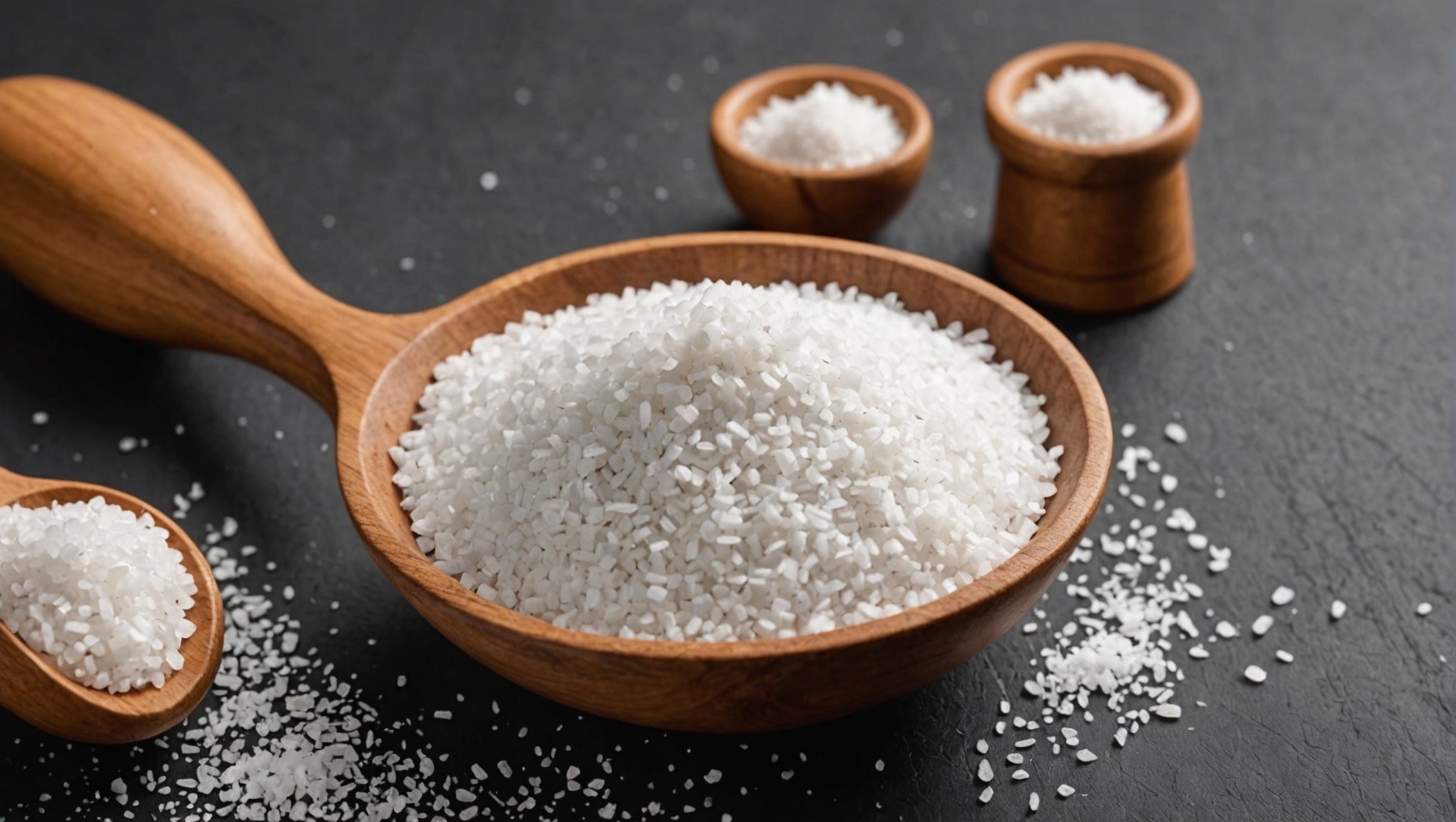Reducing salt in your diet doesn't mean sacrificing flavor. Discover innovative techniques that enhance your meals without compromising taste. From herbs and spices to smart cooking methods, this guide offers practical solutions for flavorful, low-sodium cooking. Transform your dishes with vibrant ingredients and discover how to enjoy healthier meals that satisfy your cravings. Embrace these delicious alternatives and make a positive change for your wellbeing without losing the enjoyment of food.
Understanding Sodium Intake and Health Implications
Understanding the impact of sodium intake on health is crucial. The recommended sodium intake for adults is less than 2,300 milligrams per day, which equates to about one teaspoon of salt. However, many people consume far more than this amount, often without realizing it.
In parallel : Key Components of an Effective Asthma Action Plan You Need to Know
High sodium consumption is linked to several health issues, most notably hypertension or high blood pressure. This condition increases the risk of heart disease and stroke, two leading causes of death globally. Monitoring sodium levels is essential, especially for individuals with specific health conditions like chronic kidney disease or diabetes, where sodium can exacerbate symptoms.
Key Points to Consider
- Recommended Intake: Less than 2,300 mg per day
- Health Risks: Hypertension, heart disease, stroke
- Target Groups: Individuals with kidney disease, diabetes
A quote from the American Heart Association emphasizes, "Reducing sodium intake can significantly lower the risk of cardiovascular diseases." This underscores the importance of being mindful of sodium in your diet. By understanding these implications, individuals can make informed decisions about their dietary habits, potentially improving their overall health and well-being.
Have you seen this : Spotting Dehydration in Seniors: Essential Signs to Watch For
Flavorful Alternatives to Salt
Exploring flavorful alternatives to salt can enhance your meals while maintaining a low-sodium diet.
Herbs and Spices
Using a variety of herbs and spices can significantly boost flavor without adding salt. Consider options like garlic, rosemary, and thyme, which can add depth and complexity to dishes. A pinch of cayenne pepper or paprika can introduce a subtle heat, enhancing the overall taste profile.
Natural Flavor Enhancers
Natural flavor enhancers such as citrus and vinegar are excellent substitutes for salt. Lemon or lime juice can brighten up a dish, while balsamic or apple cider vinegar adds a tangy edge. These ingredients not only reduce sodium but also bring a refreshing twist to your meals.
Umami-Rich Ingredients
For those seeking a savory depth, umami-rich ingredients like mushrooms, tomatoes, and nutritional yeast are ideal. They offer a satisfying flavor without the need for additional salt. Incorporating these elements can transform a simple dish into a gourmet experience.
- Herbs and Spices: Garlic, rosemary, thyme
- Natural Enhancers: Citrus, vinegar
- Umami Ingredients: Mushrooms, tomatoes
By incorporating these seasoning substitutes, you can enjoy delicious meals while adhering to a healthier, low-sodium lifestyle.
Cooking Techniques to Reduce Salt
Exploring different cooking techniques can significantly enhance flavors while maintaining a low-sodium diet.
Roasting and Grilling
Roasting and grilling are excellent methods to amplify natural flavors without added salt. The high heat caramelizes the natural sugars in vegetables and meats, creating a rich, complex taste. For instance, roasting carrots or grilling chicken can bring out their inherent sweetness and savory notes, reducing the need for additional seasoning.
Marinades and Brines
Using marinades and brines with low sodium content is a fantastic way to infuse flavor. Consider using a mixture of herbs, spices, and acidic elements like lemon juice or vinegar. This not only tenderizes the food but also enriches it with vibrant flavors. A simple brine of water, garlic, and herbs can transform a basic chicken breast into a flavorful delight.
Smoking and Caramelization
Incorporating smoking and caramelization techniques adds depth and complexity. Smoking imparts a rich, smoky flavor that can elevate any dish, while caramelization enhances sweetness. Try smoking vegetables or caramelizing onions to achieve a satisfying taste profile without relying on salt.
- Roasting & Grilling: Caramelizes natural sugars
- Marinades & Brines: Enhance flavor with low sodium
- Smoking & Caramelization: Adds depth and complexity
These methods can help you create delicious, low-sodium meals that are both healthy and satisfying.
Incorporating Fresh Ingredients
Utilizing fresh ingredients is a delightful way to enhance your meals without relying on added salt.
Benefits of Seasonal Produce
Choosing seasonal produce not only supports local farmers but also ensures you’re getting the most flavorful and nutrient-rich options available. Fresh, local vegetables and fruits are picked at their peak, offering superior taste and texture. This can significantly contribute to a more enjoyable eating experience.
Flavor Without Salt
Fresh ingredients naturally possess vibrant flavor profiles that can elevate any dish. For example, ripe tomatoes or crisp bell peppers can add a burst of flavor, reducing the need for salt. Incorporating a variety of seasonal produce can create a symphony of tastes that satisfies the palate.
Selecting and Preparing Fresh Herbs
When selecting fresh herbs, look for bright colors and firm leaves. Store them properly to maintain their potency. To prepare, gently wash and pat dry. Chop or tear the leaves to release their essential oils, which enhances their flavor profiles.
- Seasonal Produce: Local, nutrient-rich, flavorful
- Fresh Ingredients: Enhance flavor naturally
- Herbs: Look for bright, firm leaves
By focusing on fresh, seasonal produce, you can enjoy delicious meals that are both healthy and low in sodium.
Recipe Ideas for Low-Sodium Meals
Exploring low-sodium recipes can be both exciting and rewarding, offering a variety of healthy meals to suit any taste.
Breakfast Ideas
Start your day with a low-sodium breakfast by trying oatmeal topped with fresh fruits and a sprinkle of cinnamon. Alternatively, prepare a veggie omelet using spinach, tomatoes, and herbs. These options provide a nutritious start without excess sodium.
Lunch Options
For lunch, consider a quinoa salad with mixed vegetables and a lemon vinaigrette. Another choice is a grilled chicken wrap with lettuce, avocado, and a dash of lime juice. These meals are both flavorful and healthy, ensuring you maintain a low-sodium diet.
Dinner Inspirations
Dinner can be a delightful experience with dishes like baked salmon with a herb crust or a vegetable stir-fry using ginger and garlic. These low-sodium recipes incorporate diverse cuisines, offering a rich variety of flavors.
- Breakfast: Oatmeal with fruits, veggie omelet
- Lunch: Quinoa salad, grilled chicken wrap
- Dinner: Herb-crusted salmon, vegetable stir-fry
Incorporating these creative ideas into your meal plan can help you enjoy delicious, healthy meals while adhering to a low-sodium lifestyle.
Personal Stories and Successes
Exploring real-life experiences and achievements in reducing sodium intake.
Case Studies of Success
Personal anecdotes reveal the transformative power of reducing sodium. Take John, a 52-year-old with a history of hypertension. By embracing a low-sodium diet, he noticed significant improvements in his blood pressure within months. His journey emphasizes the potential health benefits of mindful eating.
Tips and Tricks from Experience
Individuals often share personal tips that have helped them succeed in their low-sodium cooking. One common strategy is to use herbs and spices as flavorful substitutes for salt. For instance, adding garlic and lemon zest to dishes can enhance taste without compromising health.
Impact on Health and Well-being
The journey of reducing salt intake has profound effects beyond just physical health. Many report increased energy levels and a sense of well-being. A quote from a participant reads, "Reducing sodium was challenging at first, but the impact on my health has been life-changing."
- Case Studies: Real-life transformations
- Personal Tips: Herbs and spices as substitutes
- Health Impact: Improved well-being and energy
These stories and tips highlight the practical ways individuals have successfully navigated their health journeys, offering inspiration to others.
Resources for Low-Sodium Living
Exploring resources can make adopting a low-sodium lifestyle more manageable and enjoyable.
Recommended Cookbooks and Websites
For those new to low-sodium cooking, several cookbooks offer guidance. "The No-Salt Cookbook" and "The Low-Sodium Cookbook" provide delicious recipes without sacrificing flavor. Online, websites like Healthline and American Heart Association offer extensive guides on maintaining a low-sodium diet.
Online Communities and Forums
Engaging with online communities can provide support and inspiration. Forums such as LowSodiumLiving on Reddit and Facebook groups dedicated to low-sodium recipes offer spaces to share experiences and advice. These platforms enable individuals to exchange recipe ideas and cooking tips.
Tools and Apps
Technology offers numerous tools to help track sodium intake and plan meals. Apps like MyFitnessPal and Lose It! allow users to monitor sodium levels in their daily diets. These tools can be invaluable for those committed to maintaining a low-sodium lifestyle.
- Cookbooks: "The No-Salt Cookbook," "The Low-Sodium Cookbook"
- Websites: Healthline, American Heart Association
- Communities: Reddit, Facebook groups
- Apps: MyFitnessPal, Lose It!
By utilizing these resources, individuals can effectively manage their sodium intake and enjoy a healthier lifestyle.
Overcoming Challenges in Reducing Salt
Adapting to a low-sodium diet can be daunting, but with the right strategies, it becomes manageable.
Common Obstacles
Transitioning to a low-sodium diet presents several challenges. Many struggle with the lifestyle changes required, such as reading labels diligently and altering cooking habits. Social situations, like dining out, often pose difficulties due to limited low-sodium options.
Coping Strategies
To navigate these challenges, consider proactive approaches. When dining out, research menus in advance and request dishes be prepared without added salt. Opt for restaurants known for accommodating dietary needs. In social settings, communicate your dietary requirements to hosts or bring a low-sodium dish to share.
Maintaining Flavor
Maintaining flavor while reducing sodium is crucial. Use bold herbs and spices to enhance taste. Experiment with citrus and vinegar for a tangy kick. Gradually decrease salt in recipes to allow taste buds to adjust.
- Dining Out: Research menus, communicate needs
- Social Situations: Inform hosts, bring dishes
- Flavor Tips: Use herbs, citrus, vinegar
By understanding and addressing these challenges, individuals can successfully adopt a low-sodium lifestyle without sacrificing enjoyment.
The Long-Term Benefits of Reducing Salt
Exploring the sustained advantages of sodium reduction on health and lifestyle.
Evidence-Based Benefits
Reducing sodium intake has been shown to offer numerous long-term health benefits. Studies indicate that a low-sodium diet can significantly decrease the risk of hypertension, thereby reducing the likelihood of heart disease and stroke. Moreover, individuals who adopt these dietary changes often experience improved kidney function and a lower risk of osteoporosis.
Improved Quality of Life
By embracing sodium reduction, individuals may notice enhanced energy levels and better overall well-being. This lifestyle change can lead to healthier blood pressure levels, which contributes to reduced stress on the cardiovascular system. A participant in a recent study remarked, "My quality of life has improved dramatically since I cut back on salt."
Sustainable Dietary Changes
Adopting a low-sodium lifestyle encourages sustainable dietary changes that benefit future health. It involves incorporating fresh ingredients, experimenting with herbs and spices, and becoming more conscious of food choices. These adjustments not only support long-term health but also make meals more enjoyable and diverse.
- Hypertension: Lower risk
- Quality of Life: Enhanced energy
- Sustainable Changes: Fresh ingredients, herbs, spices
By focusing on these long-term benefits, individuals can make informed decisions that positively impact their health and well-being.











